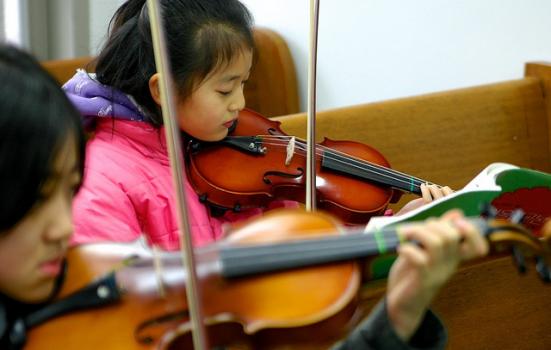Research by Opera North finds musical progression opportunities post-primary are limited and “often inappropriate”.

agullalee on Visualhunt / CC BY
Teenagers that have been involved in the In Harmony music programme at primary school are let down by their secondary schools, where musical progression opportunities are “generally limited” and “often inappropriate”, new research has found.
Although the music education programme has been credited with delivering “life-changing experiences” for children in deprived communities, a report has found the move to secondary school is challenging for young people and more needs to be done to help them continue to engage in music.
A new report by Opera North warns that the culture in secondary schools can have a negative impact on children’s motivation to take part in musical activities. It also highlights the financial challenges faced by families in helping them to do so.
“While the programmes provide the basis for progression in terms of engendering a love of music and strong musical identities, these are not sufficient to ensure progression,” conclude Dr Sue Hallam and Susanne Burns, the report authors.
“To ensure that young people engaged with In Harmony can progress in the ways that they wish… action has to be taken to remove the barriers which prevent them from taking up those opportunities.”
In Harmony
Operating in six areas of economic and cultural deprivation across England, the In Harmony programmes provide primary school children with instruments and opportunities to play together several times a week. Provision for pupils once they leave primary school vary between the programmes, but includes after-school tuition and orchestras.
Previous research has found In Harmony develops children’s instrumental skills and musicianship faster and more thoroughly than other types of tuition, and also has a positive effect on their social and emotional development.
A difficult transition
The new research, focused on musical progression routes for the programme’s participants, highlights the benefits of children continuing to participate in music, but finds a challenging school or home environment can undermine their progression.
Interviews with children and their parents revealed that some children hide their involvement in musical activities from peers as they move to secondary school to avoid seeming ‘uncool’, and some have experienced bullying.
The report also highlights a lack of opportunity for young people to engage with music at their secondary schools. Some were not able to study music at GCSE or A Level, and many schools didn’t have an orchestra.
As a result, most musical progression occurs through extra-curricular activities, but some families struggled to manage the time, money and transport requirements involved in this.
“In primary school, the programme was integrated within the school curriculum and valued within the school,” Hallam and Burns added. “At secondary school music was not always valued.”
They continued: “There was no guarantee that instrumental tuition would be available. If available, usually it was not free. Programmes tried to maintain tuition but did not have the funding to sustain it.”
‘No simple fixes’
The report recognises that the six national In Harmony programmes are diverse, with specific issues arising in each location. It notes there are “no simple fixes to promoting progression” and “no one solution that works for all”.
But the researchers identify key elements in successful programmes, such as a love of and passion for music, inclusivity, and high expectations of what can be achieved.
It stresses that each In Harmony programme needs to identify the challenges to progression for young people and families in its communities, noting it is “not sufficient to provide progression opportunities for young people from very deprived communities, it is necessary to recognise the barriers and attempt to remove them”.
It also concludes that In Harmony staff are key in developing strong, supportive relationships with young people, to inspire and motivate them and guide them in decisions about musical progression.
It calls for further research to test potential strategies that might support transition but have not yet been trialled, and for parents to be engaged early on with the In Harmony process. Regular contact, meetings and communications were considered “crucial”.
In addition, the report recommends music hubs become more involved and offer appropriate and affordable progression pathways.




